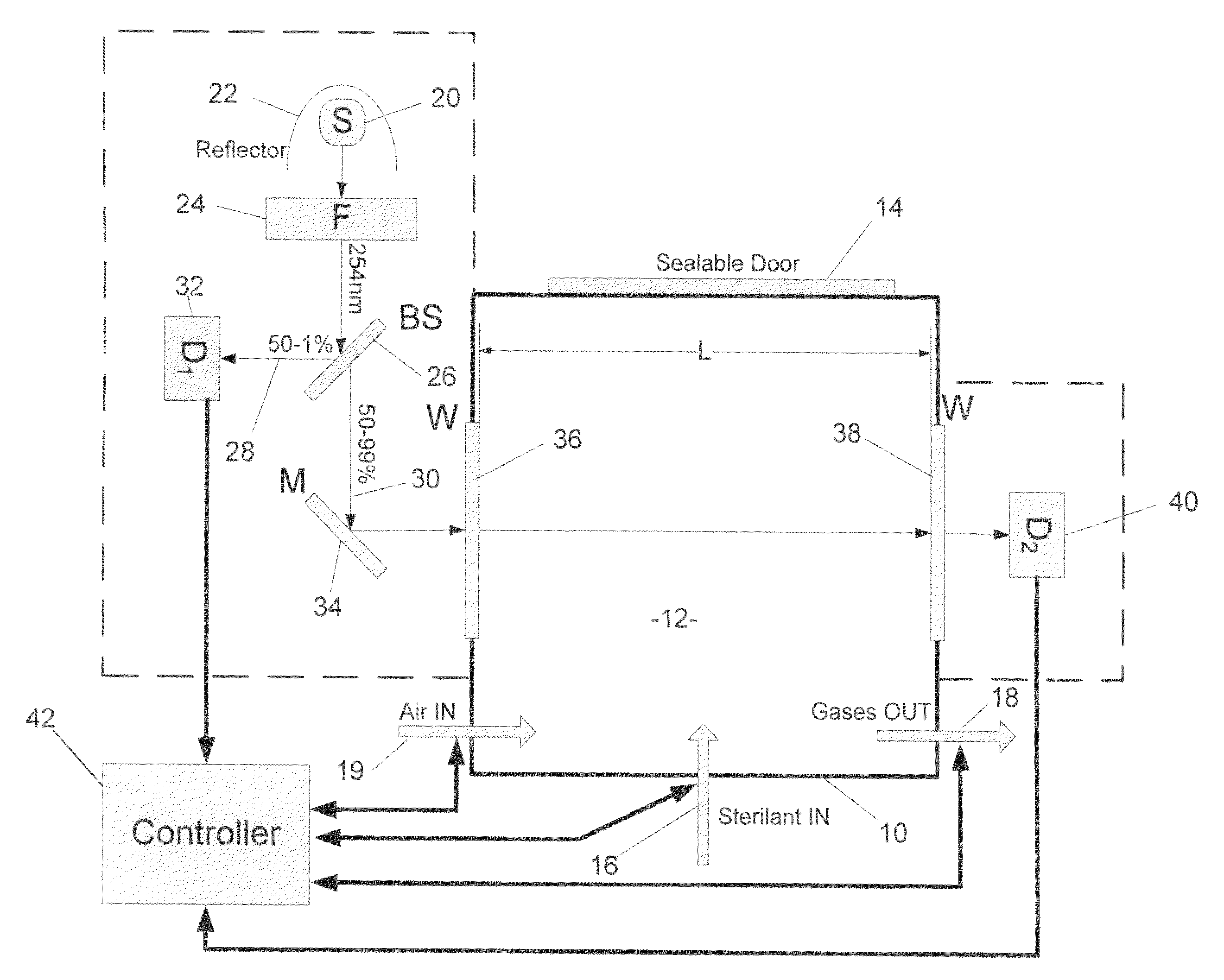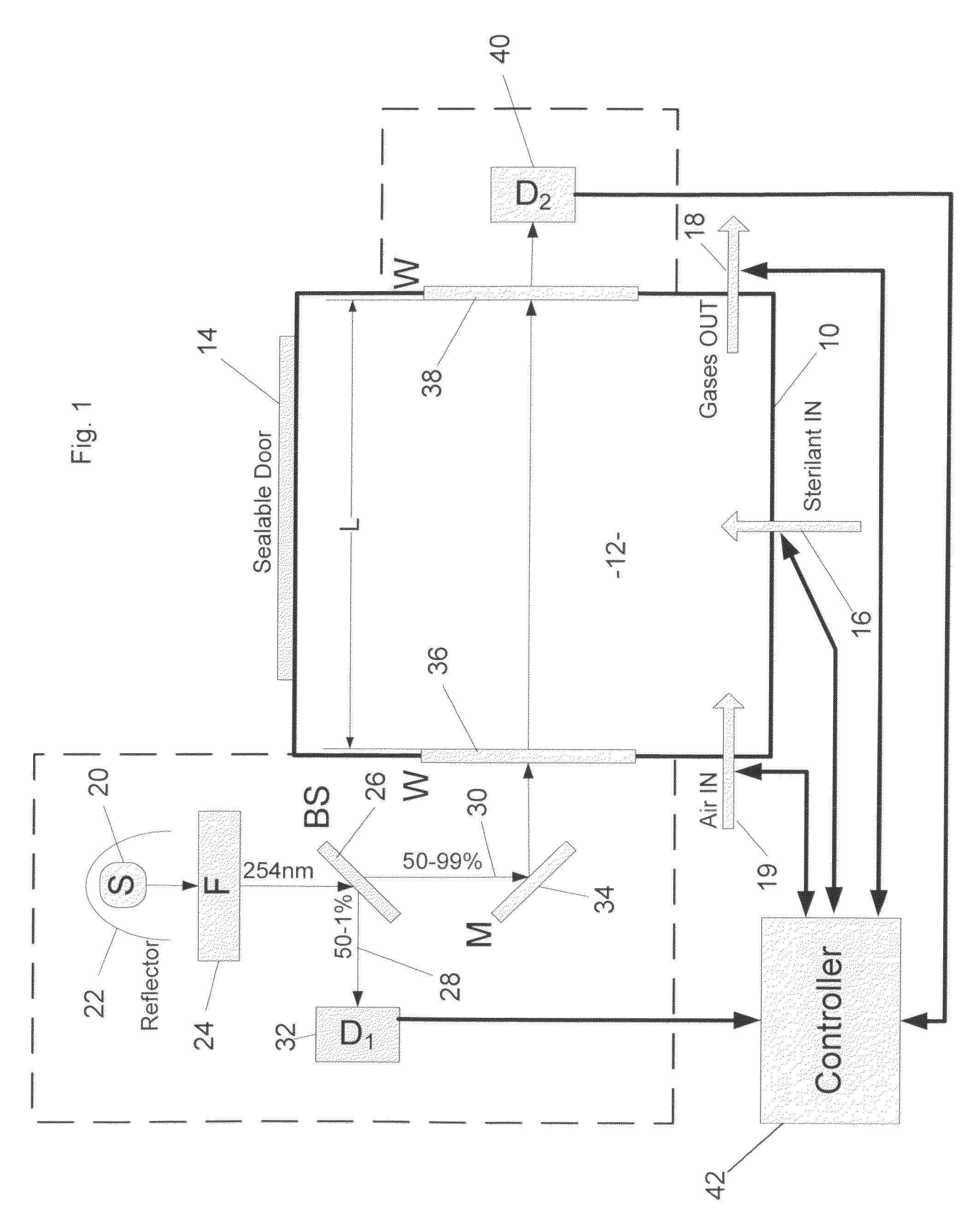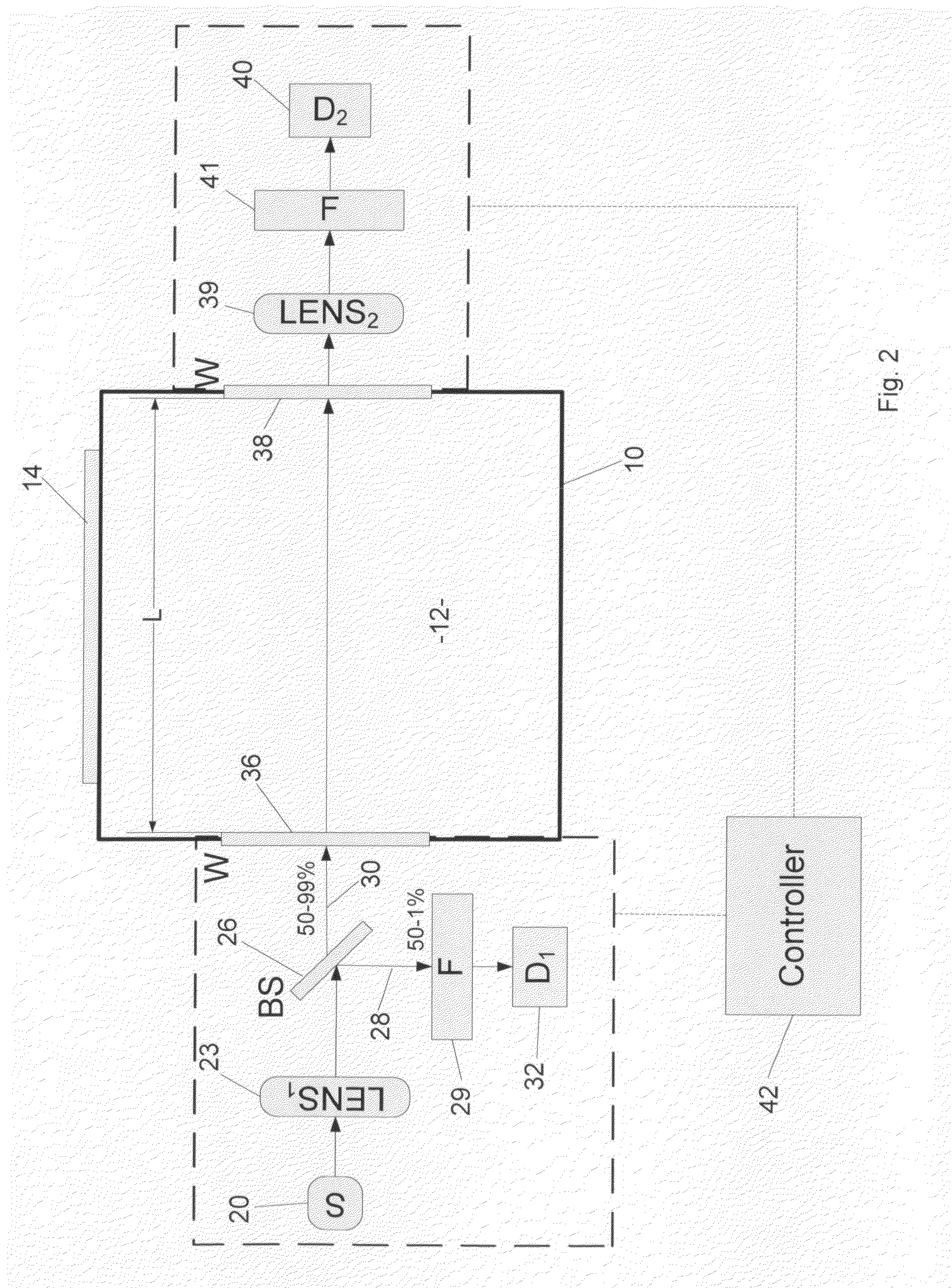Apparatus and method for measuring the concentration of gases in a sterilization chamber
a technology of sterilization chamber and apparatus, which is applied in the direction of color/spectral property measurement, instruments, and disinfection, etc., can solve the problems of inability to accurately measure the concentration of gases in the sterilization chamber, the inability to use heat sterilization for adversely affected objects, and the inability to quickly find resources, etc., to achieve high-quality concentration measurements.
- Summary
- Abstract
- Description
- Claims
- Application Information
AI Technical Summary
Benefits of technology
Problems solved by technology
Method used
Image
Examples
Embodiment Construction
[0048]The present invention relates to the sterilization of objects using a gas sterilant. To ensure proper sterilization, the concentration of the sterilant in the sterilization chamber must be maintained within a specific range for a suitable period of time. The appropriate concentration range and length of time will depend on the objects to be sterilized, the sterilization load and a variety of other factors. The present invention monitors and controls the concentration of sterilant gas over time to ensure effective and efficient sterilization.
[0049]FIG. 1 shows the present invention in its simplest form. As shown, this embodiment includes a vessel 10 surrounding a sterilization chamber 12. The vessel 10 has a sealable door 14 through which items to be sterilized can be placed into the chamber 12 and items that have been sterilized can be removed from the chamber 12. The vessel 10 also includes a port 16 through which sterilant gas can be added to the chamber 12, a port 18 throug...
PUM
| Property | Measurement | Unit |
|---|---|---|
| temperatures | aaaaa | aaaaa |
| temperatures | aaaaa | aaaaa |
| wavelengths | aaaaa | aaaaa |
Abstract
Description
Claims
Application Information
 Login to View More
Login to View More - R&D Engineer
- R&D Manager
- IP Professional
- Industry Leading Data Capabilities
- Powerful AI technology
- Patent DNA Extraction
Browse by: Latest US Patents, China's latest patents, Technical Efficacy Thesaurus, Application Domain, Technology Topic, Popular Technical Reports.
© 2024 PatSnap. All rights reserved.Legal|Privacy policy|Modern Slavery Act Transparency Statement|Sitemap|About US| Contact US: help@patsnap.com










